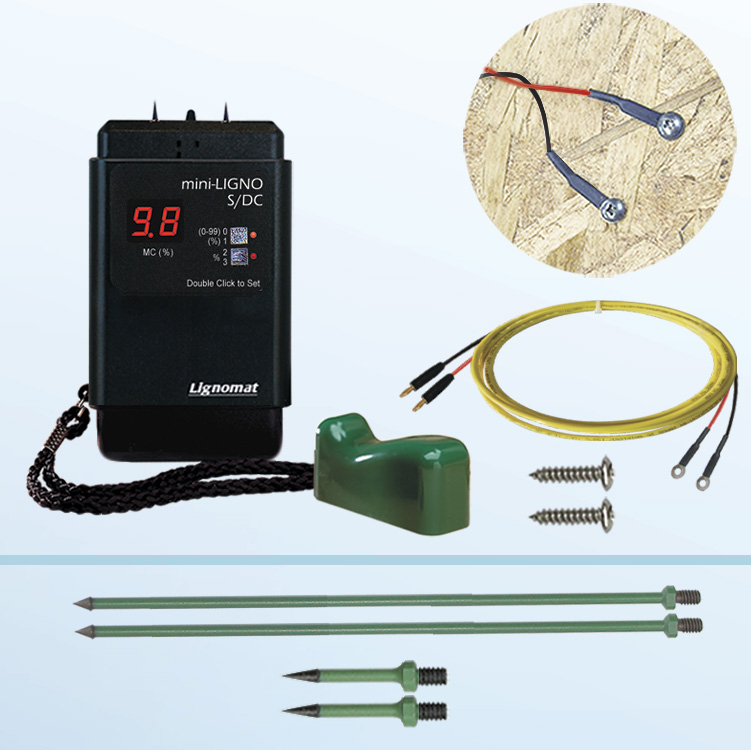The Ultimate Overview to Choosing the Right Moisture Meter for Your Needs
The Ultimate Overview to Choosing the Right Moisture Meter for Your Needs
Blog Article
The Ultimate Overview to Moisture Meters: A Comprehensive Introduction and How They Can Conserve You Cash
Moisture meters serve as important tools in finding and checking moisture content in materials, aiding in protecting against expensive damages and ensuring the top quality of products. Comprehending the nuances of various kinds of dampness meters, their applications, and the possible cost-saving advantages they supply can be a game-changer for specialists and services alike.
Sorts Of Dampness Meters
One common type is the pin-type wetness meter, which measures the electric resistance between 2 pins inserted into a product. Pinless moisture meters, on the various other hand, use electromagnetic sensing unit plates to scan a bigger area without creating damage to the material's surface area.

Additionally, there are likewise specialty dampness meters made for certain materials like grain, dirt, or hay. These meters offer exact moisture analyses tailored to the one-of-a-kind buildings of the material being examined. Infrared wetness meters measure the thermal properties of a product to identify its dampness content non-invasively, making them useful for applications where pin or pinless meters may not appropriate. Understanding the various kinds of moisture meters readily available can aid sectors pick one of the most proper tool for their specific wetness dimension demands.

Benefits of Utilizing Wetness Meters
Dampness meters offer invaluable benefits in accurately evaluating and checking moisture levels in varied materials and atmospheres (Moisture Meter). Among the main benefits of utilizing wetness meters is the prevention of prospective damages caused by excess wetness. By spotting and resolving high dampness levels beforehand, wetness meters help to stop mold and mildew development, rot, and structural damages in structures, conserving both time and money on fixings. Additionally, moisture meters aid in making certain the quality of products throughout building or production processes. By accurately determining moisture content, these tools help keep the honesty of timber, drywall, concrete, and other products, decreasing the risk of failures or flaws.
Additionally, using wetness meters can lead to raised energy performance. By determining locations with high moisture degrees, such as leakages or inadequate insulation, adjustments can be made to improve power preservation and minimize utility expenses. In agricultural settings, wetness meters play a critical function in maximizing plant returns by enabling farmers to keep an eye on soil wetness levels and make informed watering choices. Overall, the advantages of using moisture meters extend across different sectors, offering affordable solutions and promoting much better quality control practices.
How to Choose the Right Moisture Meter
Choosing the proper moisture meter entails thinking about crucial factors such as product compatibility, measurement range, and calibration precision. When selecting a wetness meter, it's important to ensure that the meter is ideal for the details product you will certainly be screening. Different materials have varying electrical homes that can influence dampness analyses, so selecting a meter created for your product is crucial for precise results. Furthermore, take into consideration the measurement range of the dampness meter. Make certain that the meter can find moisture degrees within the array needed for your applications. Calibration precision is another vital factor to remember. Select a moisture meter with trusted calibration to ensure regular and exact readings. Some meters might call for periodic calibration adjustments, so comprehending the calibration process is essential. By very carefully examining these factors, you can pick a moisture meter that fulfills your needs and supplies accurate moisture dimensions for your projects.
Proper Strategies for Wetness Meter Use

Cost Cost Savings Through Moisture Meter Applications
Just how can the critical application of dampness meters lead to substantial expense check financial savings throughout different industries? In the agriculture sector, dampness meters help in determining the optimal time for collecting crops, preventing excess or over-drying moisture that can impact the final item's top quality.
Likewise, in building, dampness meters aid stop costly problems by finding dampness levels in building products, such as wood or concrete, which can bring about architectural concerns otherwise dealt with without delay. By recognizing issue locations at an early stage, contractors can take restorative procedures to prevent substantial repairs or replacements, eventually conserving money and time.
Additionally, in the food handling market, wetness meters are necessary for monitoring item high quality and making sure conformity with safety and security regulations. By accurately determining dampness material in food, manufacturers can avoid perishing, preserve quality, and decrease waste, causing considerable cost savings. In general, the strategic application of dampness meters is a beneficial investment that can lead to considerable cost reductions and improved performance across different markets.
Final Thought
In conclusion, wetness meters are important devices for determining and detecting wetness degrees in various materials. By making use of the ideal dampness meter and following correct methods, users can properly prevent expensive problems go to the website caused by excess dampness. Spending in a top quality dampness meter can bring about significant expense savings in the future by recognizing prospective problems beforehand and enabling timely removal. Inevitably, wetness meters are essential tools for keeping the integrity and durability of products and structures.
Wetness meters serve as crucial tools in finding and keeping track of moisture content in materials, helping in protecting against pricey damages and making sure the quality of products. Infrared moisture meters gauge the thermal buildings of a product to determine its moisture content non-invasively, making them useful for applications where pin or pinless meters might not be suitable.Wetness meters provide important advantages in properly keeping track of and assessing wetness degrees in diverse products and settings. In agricultural settings, dampness meters play an essential function in enhancing plant returns by allowing farmers to monitor dirt moisture degrees and make notified irrigation choices.In conclusion, dampness meters are beneficial tools for identifying and measuring wetness reference levels in different products.
Report this page